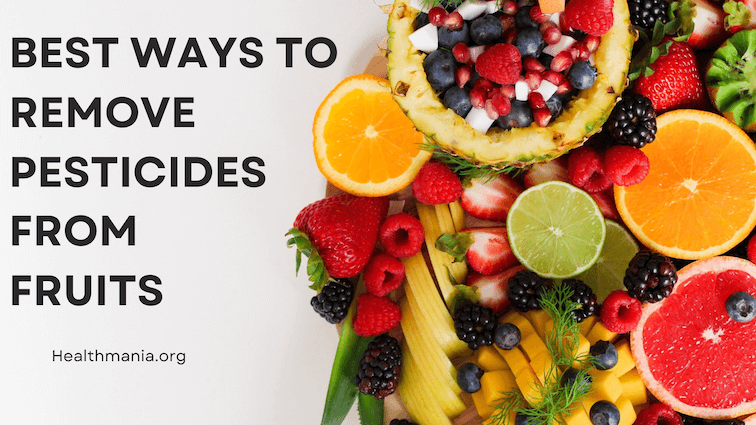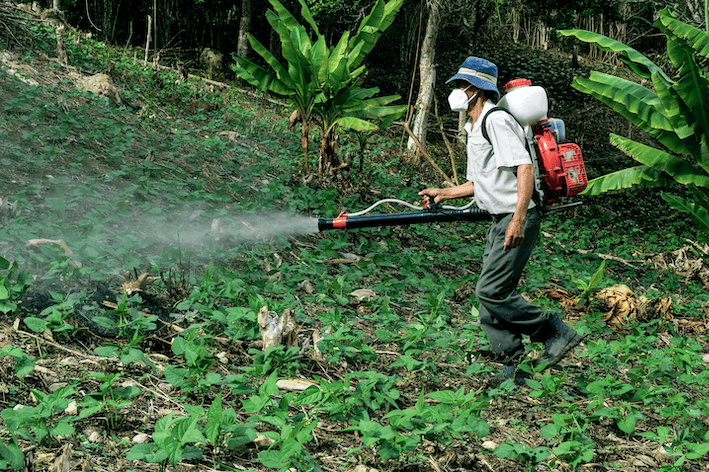In our quest for healthier living, the consumption of fresh fruits is an integral part of maintaining a balanced diet. However, the presence of surface pesticides on fruits has become a growing concern, urging us to explore effective methods to ensure our produce is not only delicious but also safe for consumption.
This article delves into practical strategies and techniques to remove pesticides from fruits, with a focus on preserving nutritional value and promoting overall well-being. From simple water rinses to innovative solutions involving vinegar and baking soda, let’s unravel the best practices for achieving a pesticide-free fruit platter while navigating the nuances of each method.
Strawberries and grapes contain highest levels of pesticides
Strawberries and grapes are reported to contain some of the highest levels of pesticides among various fruits. These two fruits have consistently ranked high on lists assessing pesticide residues, raising concerns about potential health risks associated with their consumption. As people are now mindful of the impact of pesticides on their well-being, understanding and addressing this issue is crucial for making informed choices about fruit consumption and exploring effective methods to minimize pesticide exposure.
Best ways to remove pesticides from fruits
Wash with water
-
- Place the fruits under cold, running water.
- Use your hands or a brush to gently scrub the surface of the fruit, paying attention to any cracks or areas where pesticides may accumulate.
- Continue rinsing until you’ve thoroughly washed away any visible dirt or contaminants.
Use vinegar solution
-
- Mix a solution of water and white vinegar in a ratio of 1:3 (one part vinegar to three parts water).
- Submerge the fruits in this solution for 5-10 minutes. The acidity of the vinegar helps break down and remove pesticides.
- After soaking, rinse the fruits under running water to remove any vinegar residue.
Baking soda scrub
-
- Create a paste by mixing baking soda with water until you achieve a thick consistency.
- Gently apply the paste to the surface of the fruits, using a soft brush or your fingers.
- Allow the paste to sit on the fruits for a few minutes before scrubbing.
- Rinse the fruits thoroughly under running water to remove the baking soda residue.
Use commercial fruit wash
-
- Follow the instructions on the commercial fruit wash product. These products are specifically formulated to remove pesticides.
- Typically, you’ll need to dilute the wash with water and then immerse the fruits in the solution for a specified amount of time.
- After the recommended soaking time, rinse the fruits under running water to remove any remaining residues.
Peeling
-
- If you choose to peel the fruit, use a knife or a peeler to remove the outer skin.
- This method is particularly effective for fruits with thicker skins, such as apples or cucumbers.
- Keep in mind that some nutrients, including fiber and certain vitamins, are concentrated in the skin, so peeling may result in a loss of nutritional value.
Choose organic
-
- Purchase organic fruits whenever possible. Organic farming practices typically avoid synthetic pesticides and chemicals.
Drying with paper towels
-
- After washing, pat the fruits dry with clean paper towels.
- Drying with paper towels can help remove any remaining pesticide residues on the surface.
Remember, the effectiveness of these methods may vary depending on the type of fruit and the specific pesticides used. Always handle fruits gently to avoid damaging them, and follow any additional recommendations provided by food safety guidelines or the fruit packaging.
Ozone disinfection technology to remove pesticides
Ozone disinfection technology can be employed as an effective and environmentally friendly method to remove pesticides from fruits. This technology utilizes ozone, a powerful oxidizing agent, to break down and neutralize pesticides present on the surfaces of fruits. Here’s how ozone disinfection technology can be applied in the context of removing pesticides from fruits:
Oxidative breakdown
Ozone, with its strong oxidative properties, reacts with and breaks down pesticides on the surface of fruits. This process helps to neutralize and degrade the pesticide residues without leaving behind harmful byproducts.
Surface disinfection
Ozone can be applied as a disinfectant to the surfaces of fruits, effectively targeting pesticide residues. This method ensures that the ozone comes into direct contact with the contaminants, promoting thorough disinfection.
Water wash with Ozone
Fruits can be treated by washing them with water containing dissolved ozone. The ozone helps in removing pesticide residues through oxidation, leaving fruits with reduced pesticide levels.
Ozone rinse
Fruits can be subjected to an ozone rinse, where they are exposed to ozone-enriched water. This process facilitates the breakdown of pesticide residues, promoting a cleaner and safer fruit surface.
Ozone gas treatment
Ozone gas can be applied in enclosed environments to treat fruits for pesticide removal. This method ensures that the ozone reaches all surfaces of the fruits, providing a comprehensive disinfection process.
Environmental friendliness
Ozone disinfection technology is environmentally friendly, as ozone decomposes back into oxygen after use. It does not leave behind harmful residues or contribute to environmental pollution, making it a sustainable choice for pesticide removal.
Preservation of nutritional quality
Unlike some chemical methods, ozone disinfection technology is less likely to affect the nutritional quality of fruits. It targets pesticides without compromising the intrinsic properties and nutritional content of the produce.
Application in food processing
Ozone is already utilized in the food processing industry for its disinfection properties. Applying this technology to remove pesticides from fruits aligns with its proven effectiveness in ensuring food safety.
Safety considerations
While ozone is generally safe for use in food applications, it is important to follow recommended guidelines and safety measures to avoid excessive exposure. Adequate ventilation and controlled ozone levels should be maintained during the disinfection process.
Ozone disinfection technology offers a promising approach to enhance the safety of fruits by reducing pesticide residues. Its ability to provide thorough disinfection, coupled with its environmental sustainability, makes it a compelling option for ensuring cleaner and healthier produce.
Conclusion
It’s important to focus on our health by using good ways to get rid of pesticides from fruits. We’ve talked about different ways like washing fruits really well, using natural stuff like vinegar and baking soda, and choosing organic fruits. Doing these things helps take away pesticides and makes the fruits safer to eat. So, by making smart choices, we not only keep ourselves healthy but also help make our food cleaner and safer for everyone.
FAQs
Why are pesticides used on fruits?
Pesticides are used in farming to protect crops from pests, diseases, and weeds. They help ensure higher yields and better-quality produce.
Which fruits tend to have higher pesticide levels?
Fruits such as strawberries, grapes, apples, and peaches are often reported to have higher pesticide levels. However, the levels can vary, and it’s essential to stay informed about specific fruits.
How do pesticides affect our health?
Pesticides can pose health risks if consumed in high amounts. They may be linked to issues like pesticide residues on fruits. Long-term exposure to certain pesticides has been associated with health concerns, making it important to minimize their presence on fruits.
Do washing and peeling fruits remove all pesticides?
While washing and peeling can reduce pesticide residues, they may not eliminate all of them. Some pesticides can be absorbed into the fruit, making it crucial to adopt multiple methods for effective pesticide removal.
Are organic fruits completely pesticide-free?
Organic fruits are grown without synthetic pesticides, but they may still use natural pesticides. While organic fruits generally have lower pesticide residues, they may not be entirely pesticide-free.
Can I use regular dish soap to wash fruits?
It’s not recommended to use regular dish soap on fruits, as it may leave behind harmful residues. Stick to using food-grade solutions like vinegar or baking soda to wash fruits safely.
How often should I wash my fruits?
It’s advisable to wash fruits before consumption, even if you plan to peel them. Washing helps remove dirt, bacteria, and some pesticide residues from the surface, promoting safer consumption.
Are there any fruits that don’t require pesticide removal?
Organic fruits or those labeled pesticide-free may have lower residues, but it’s still recommended to wash them. Some fruits with thicker skins or rinds may have lower pesticide exposure, but it varies.

